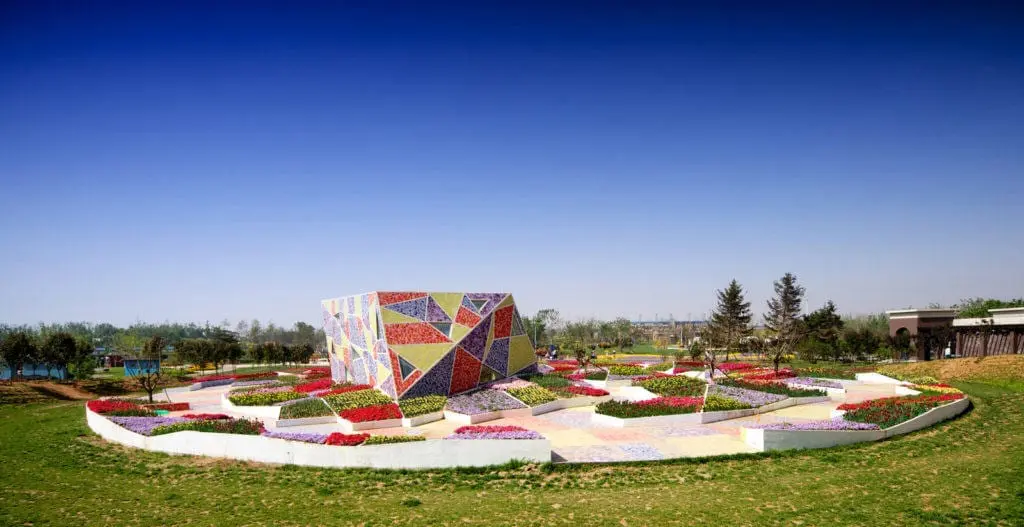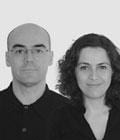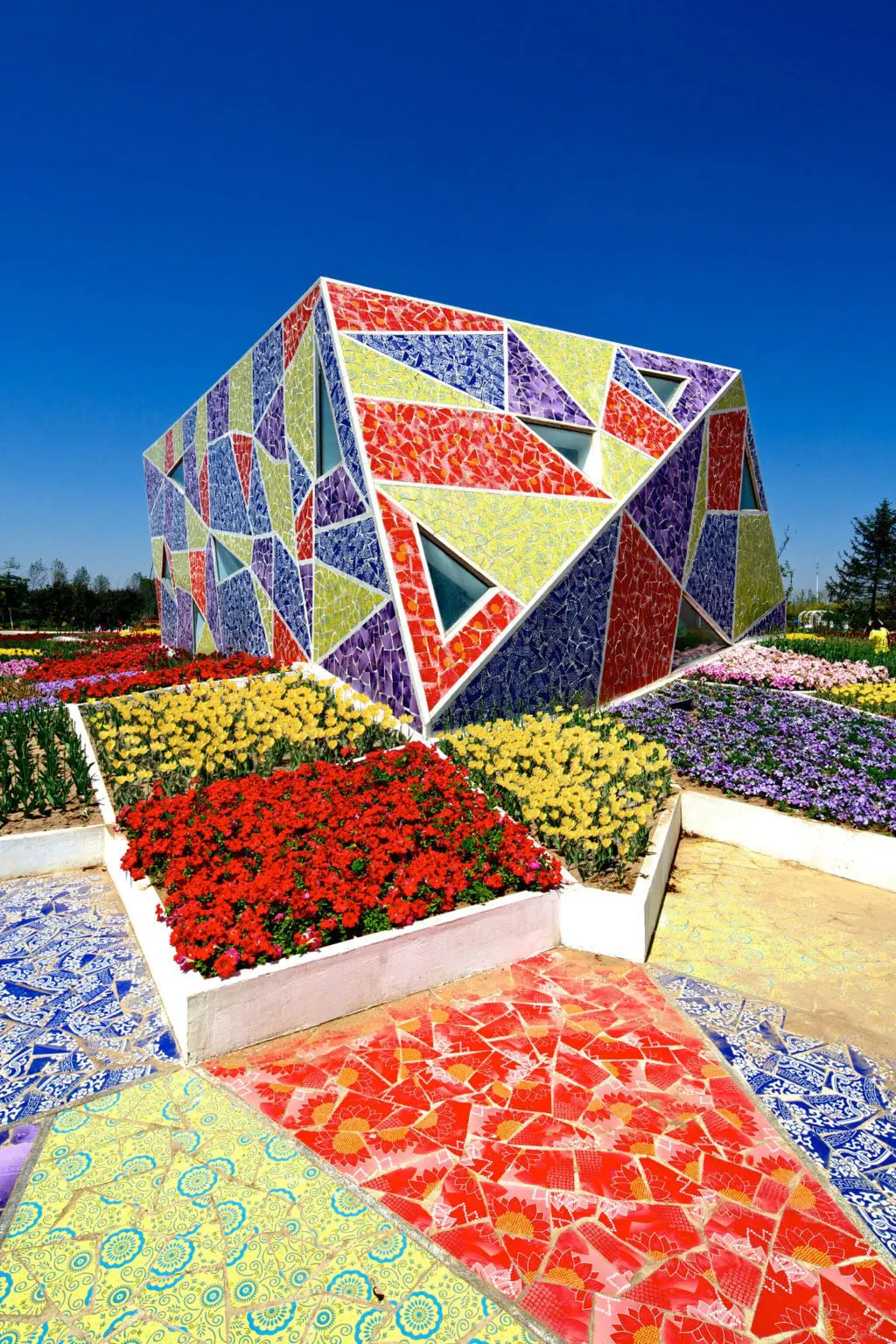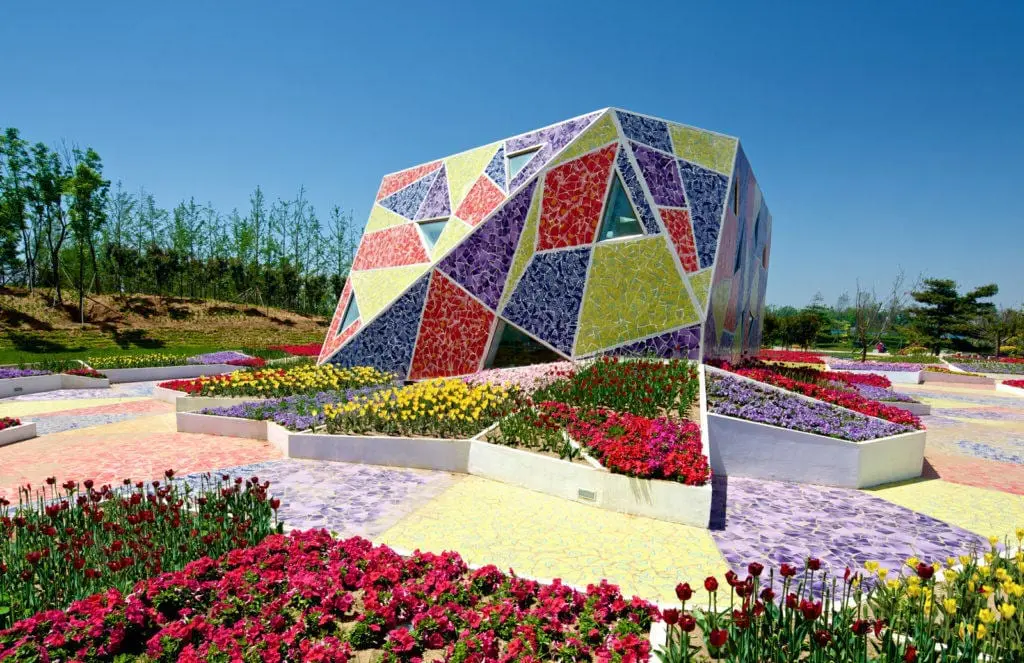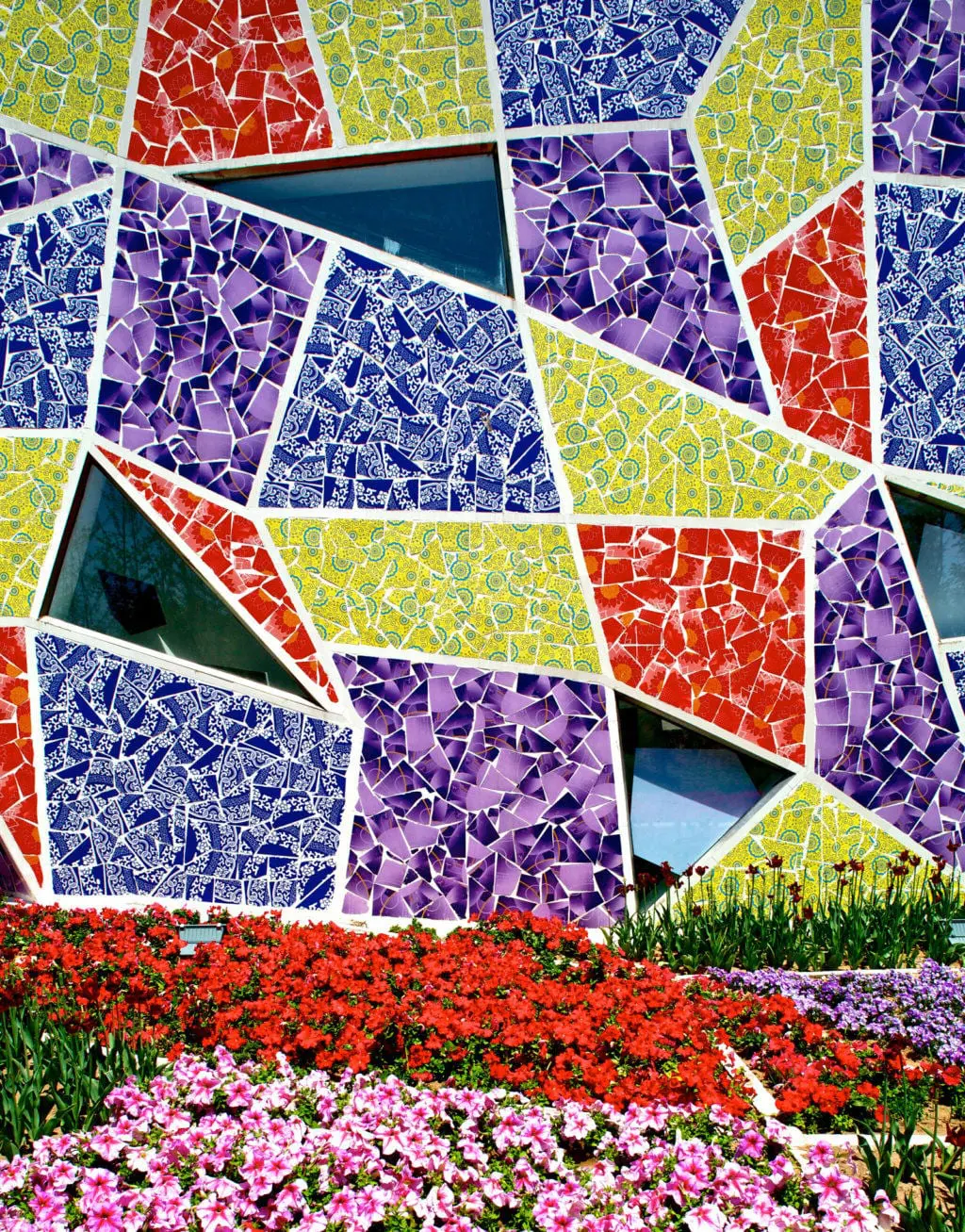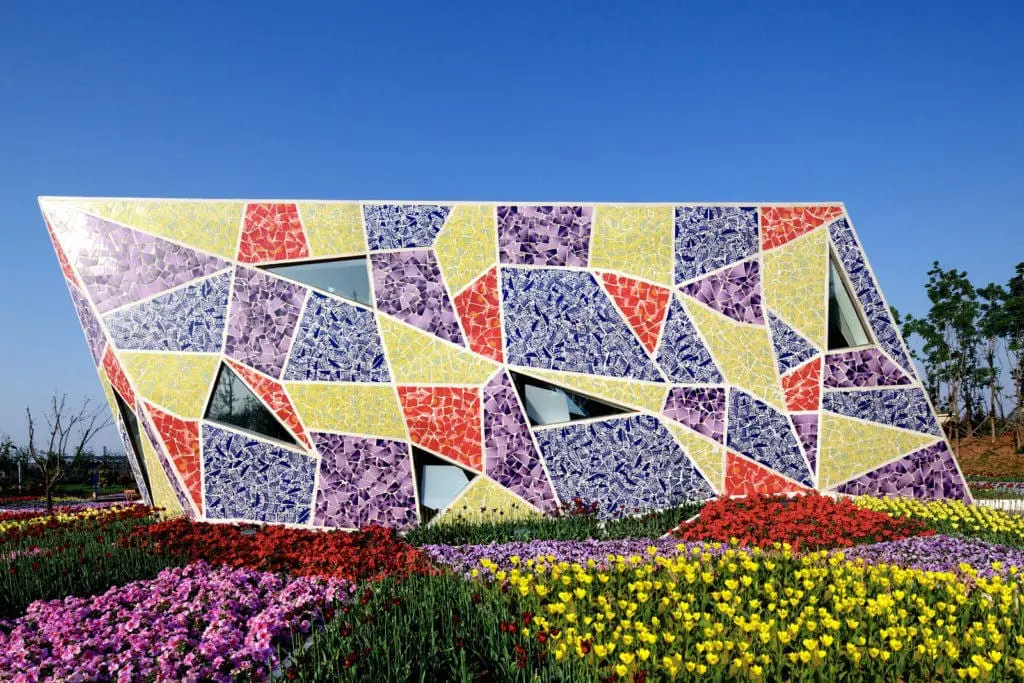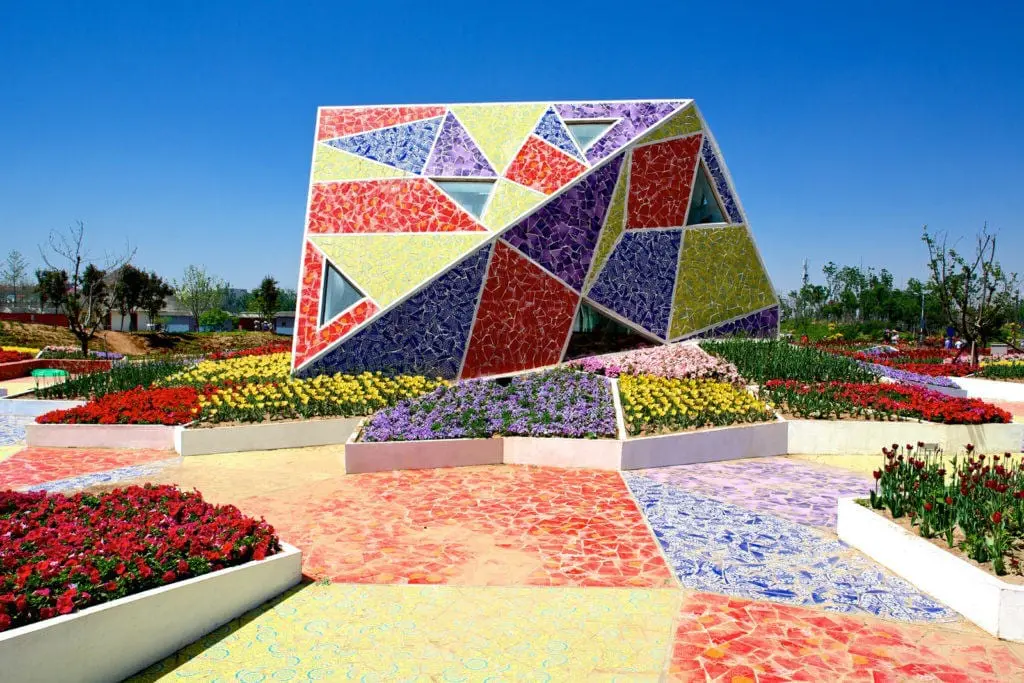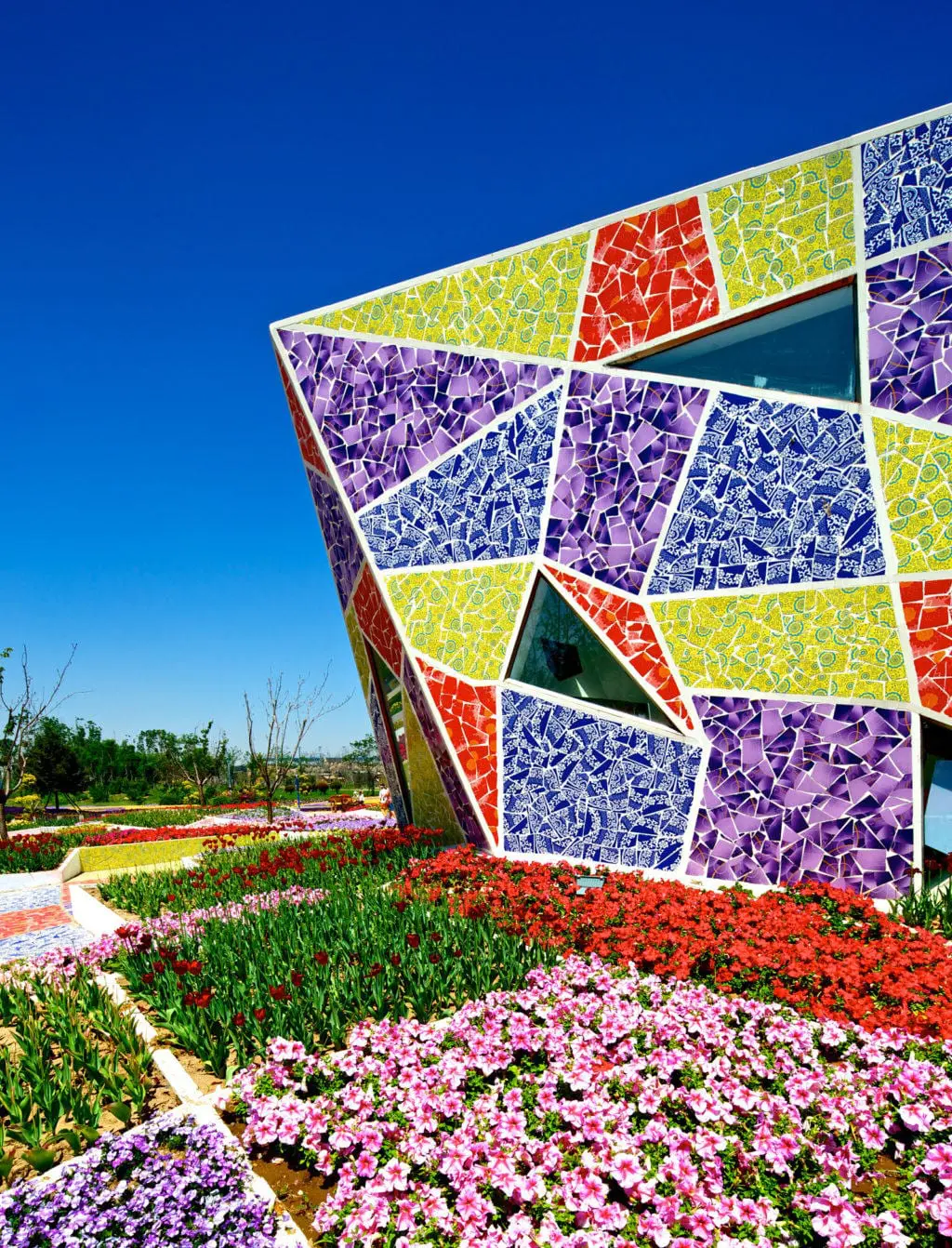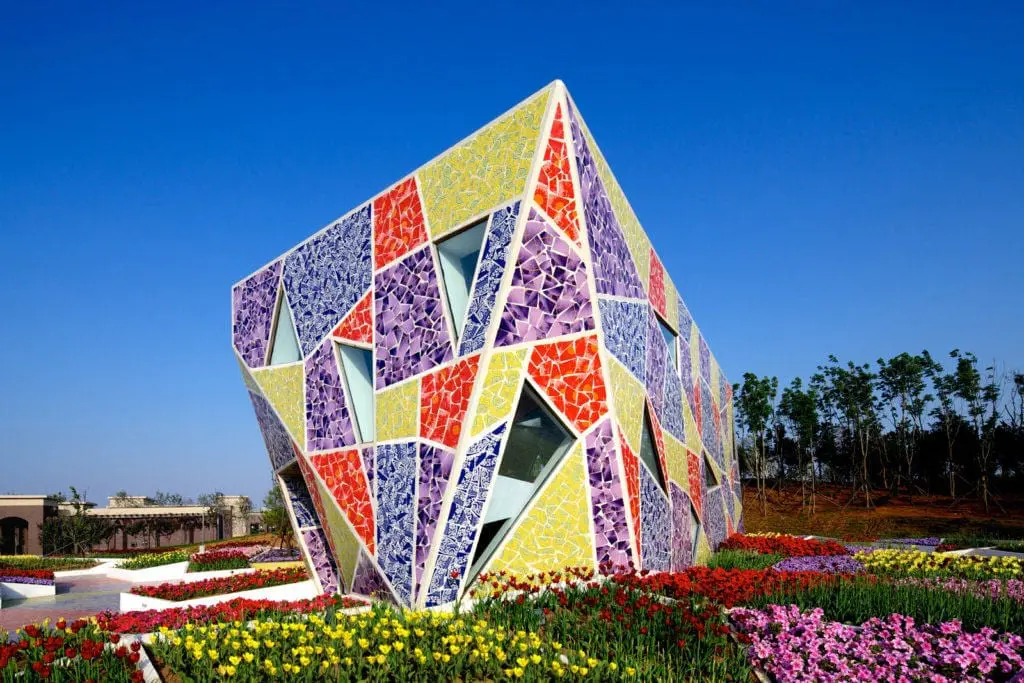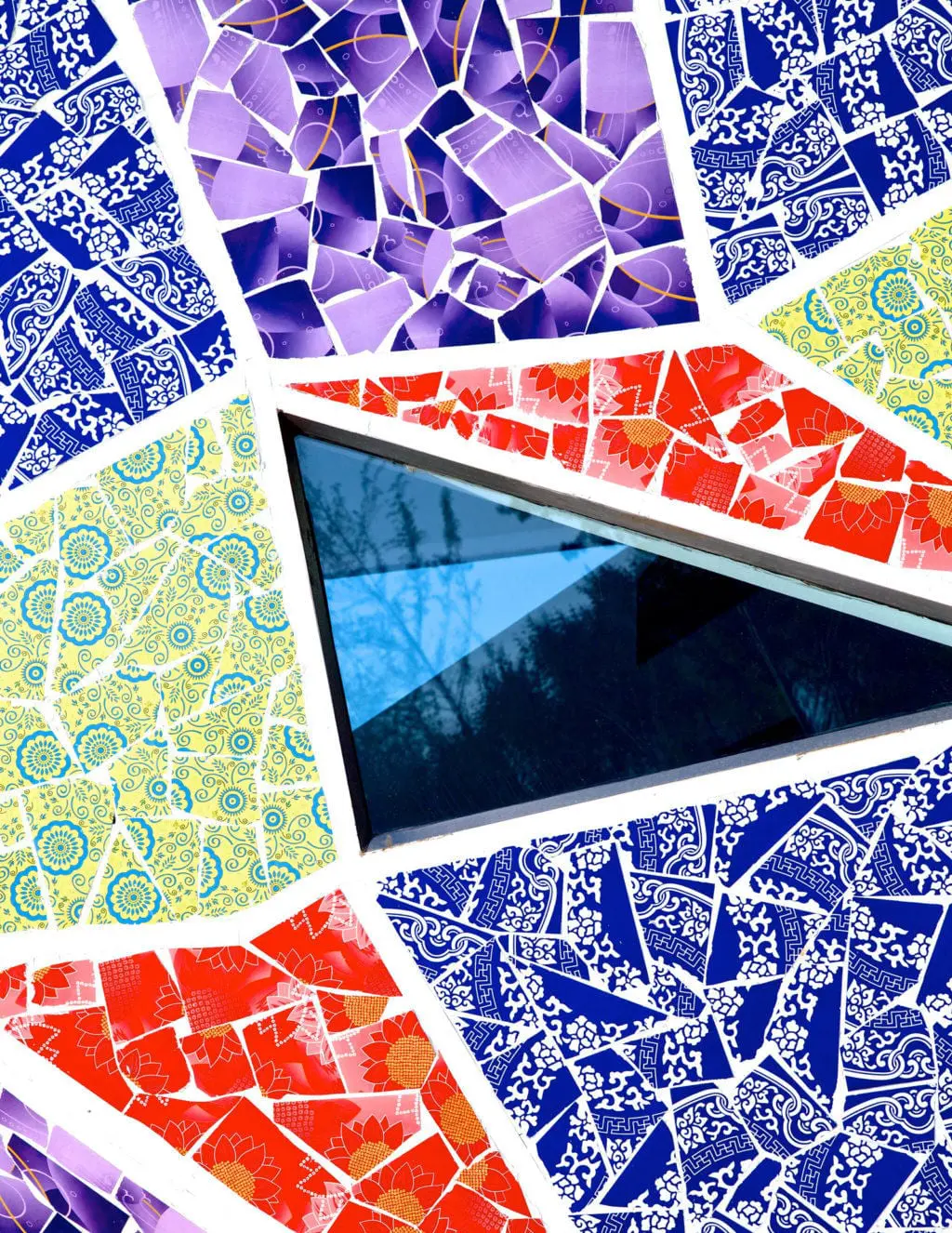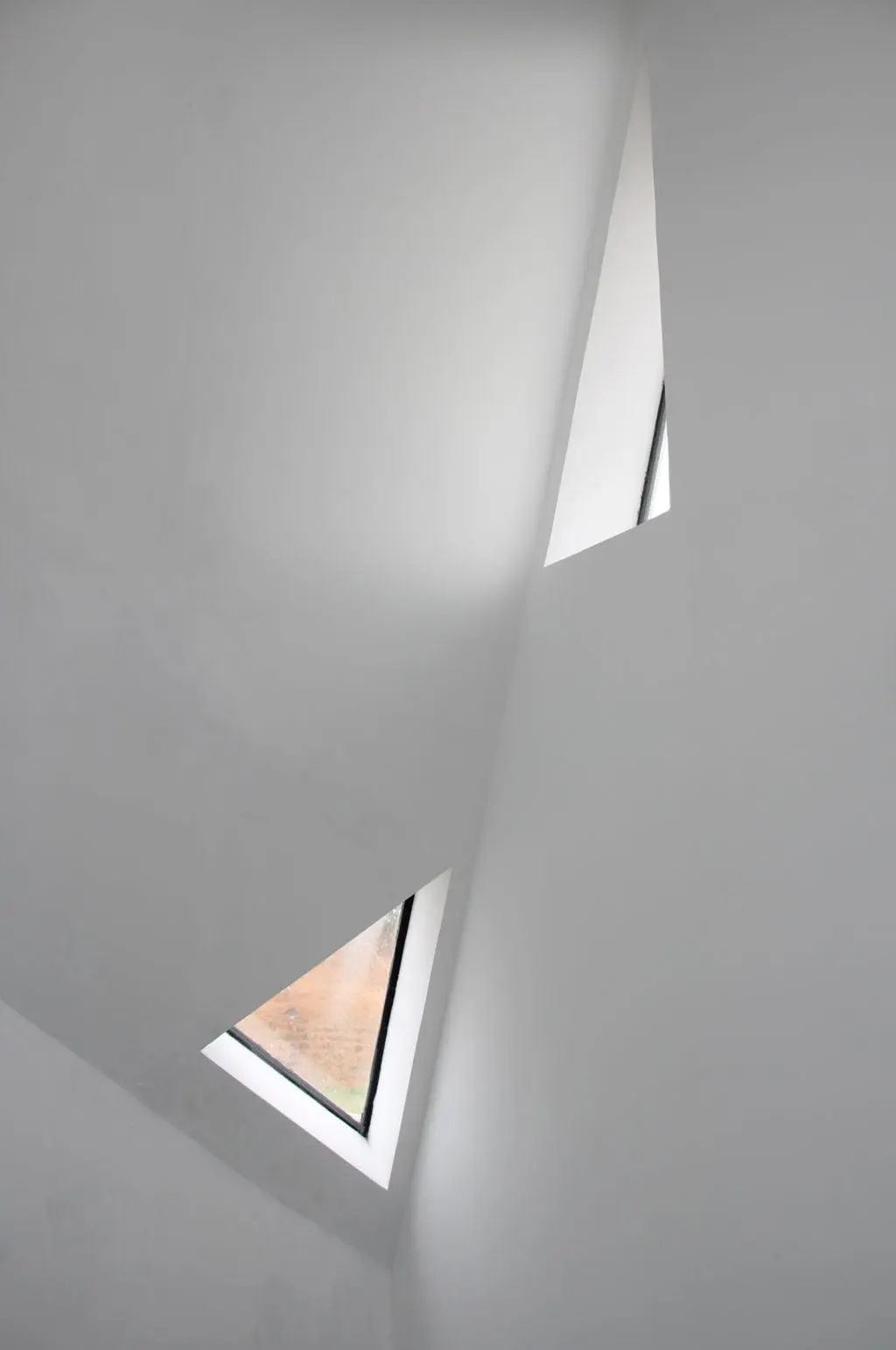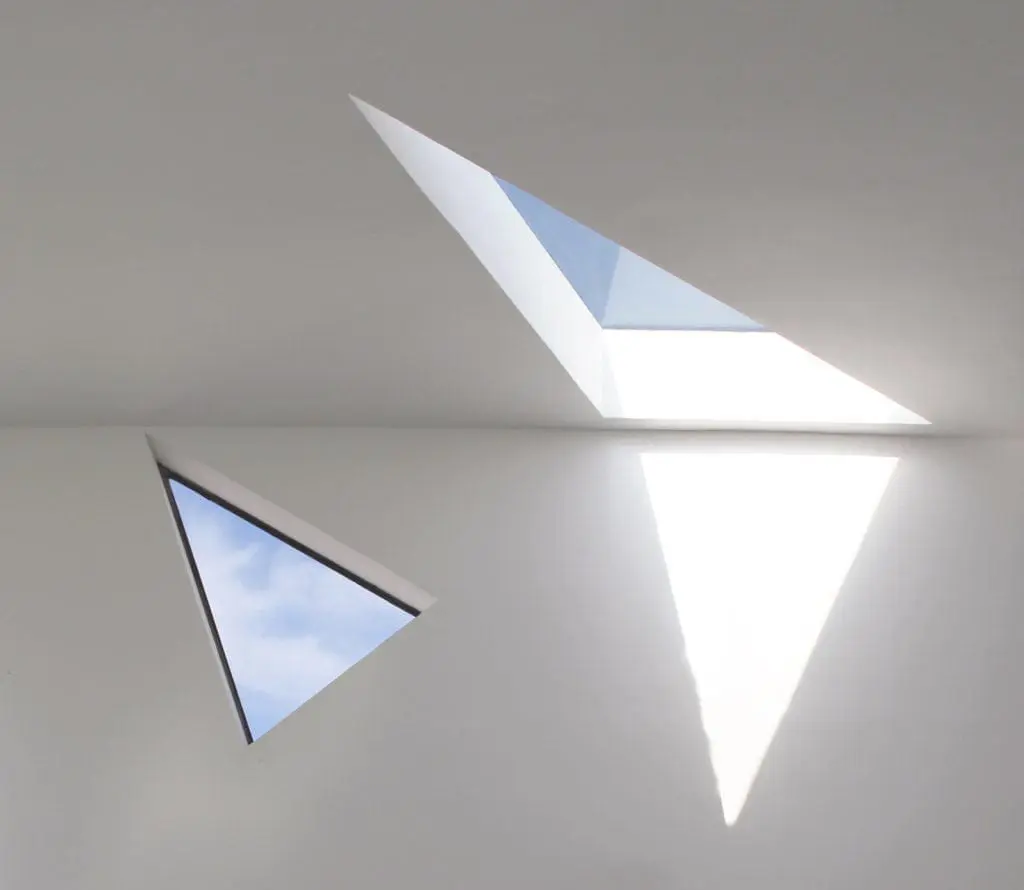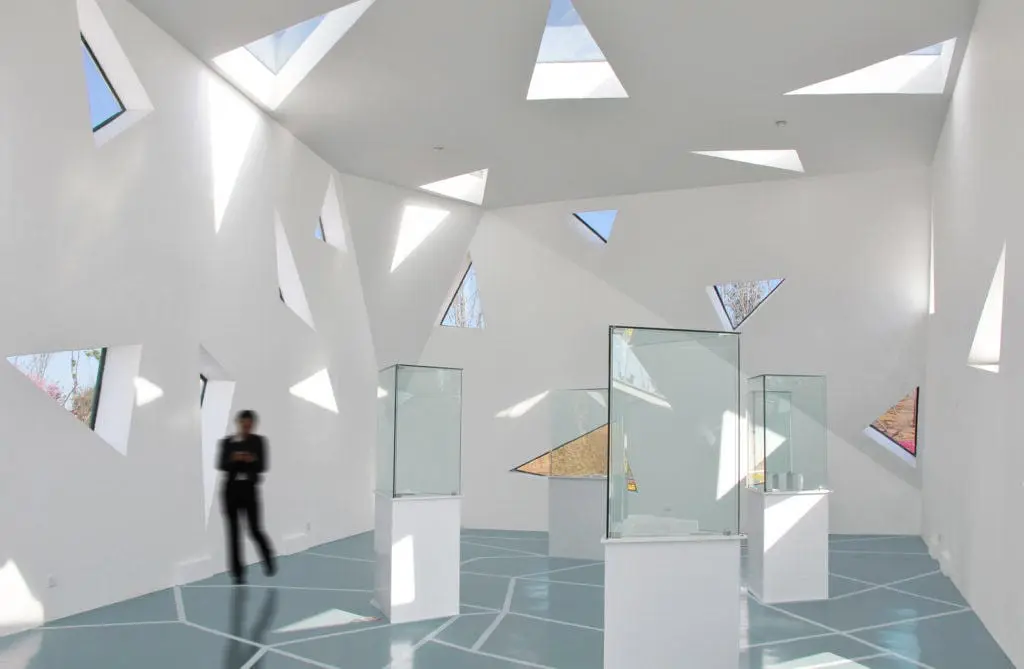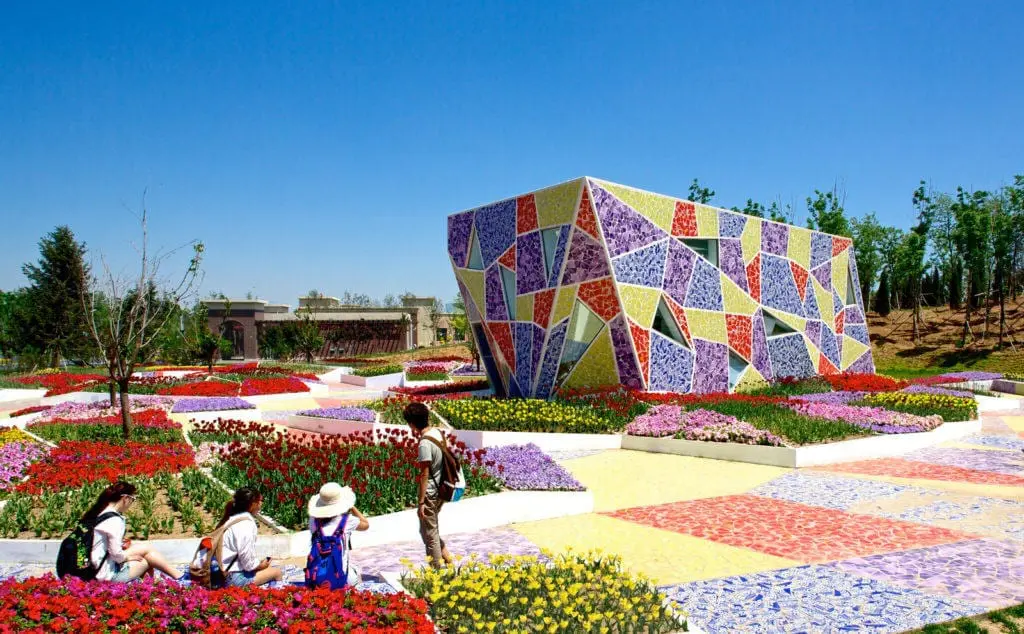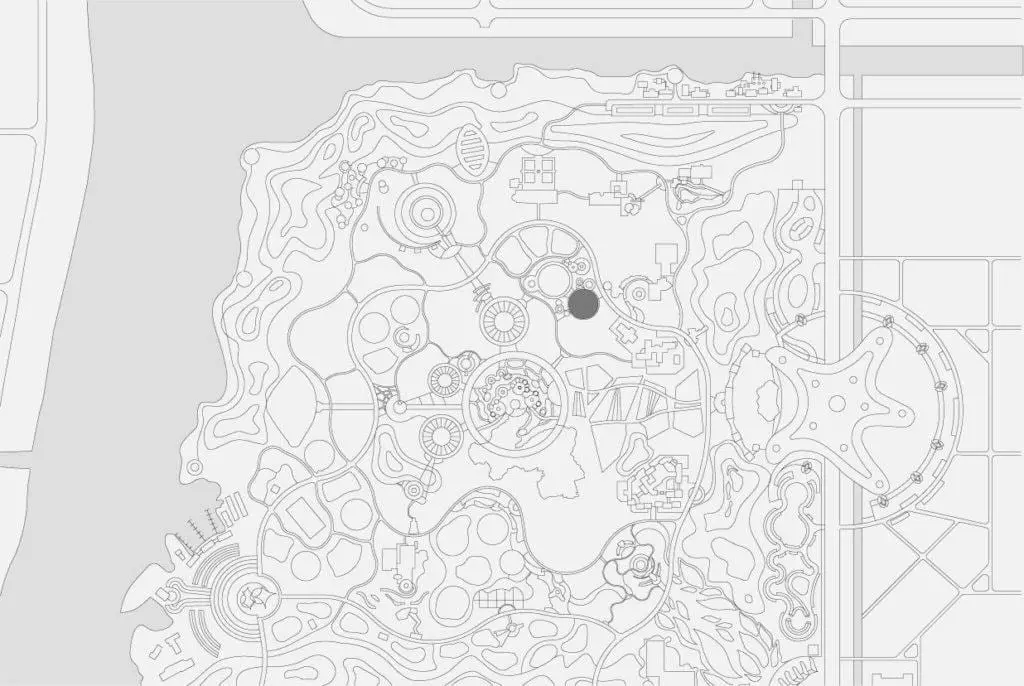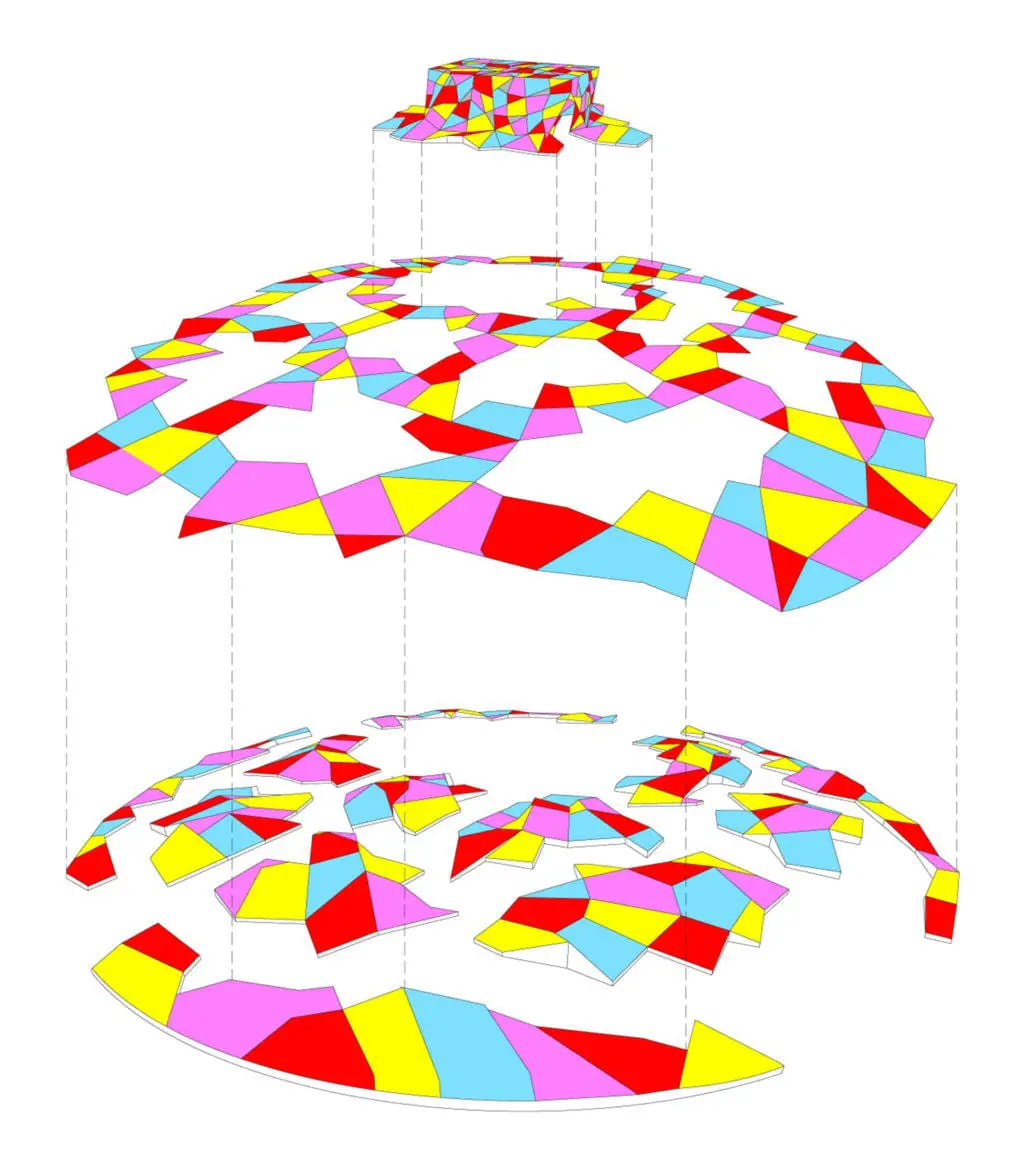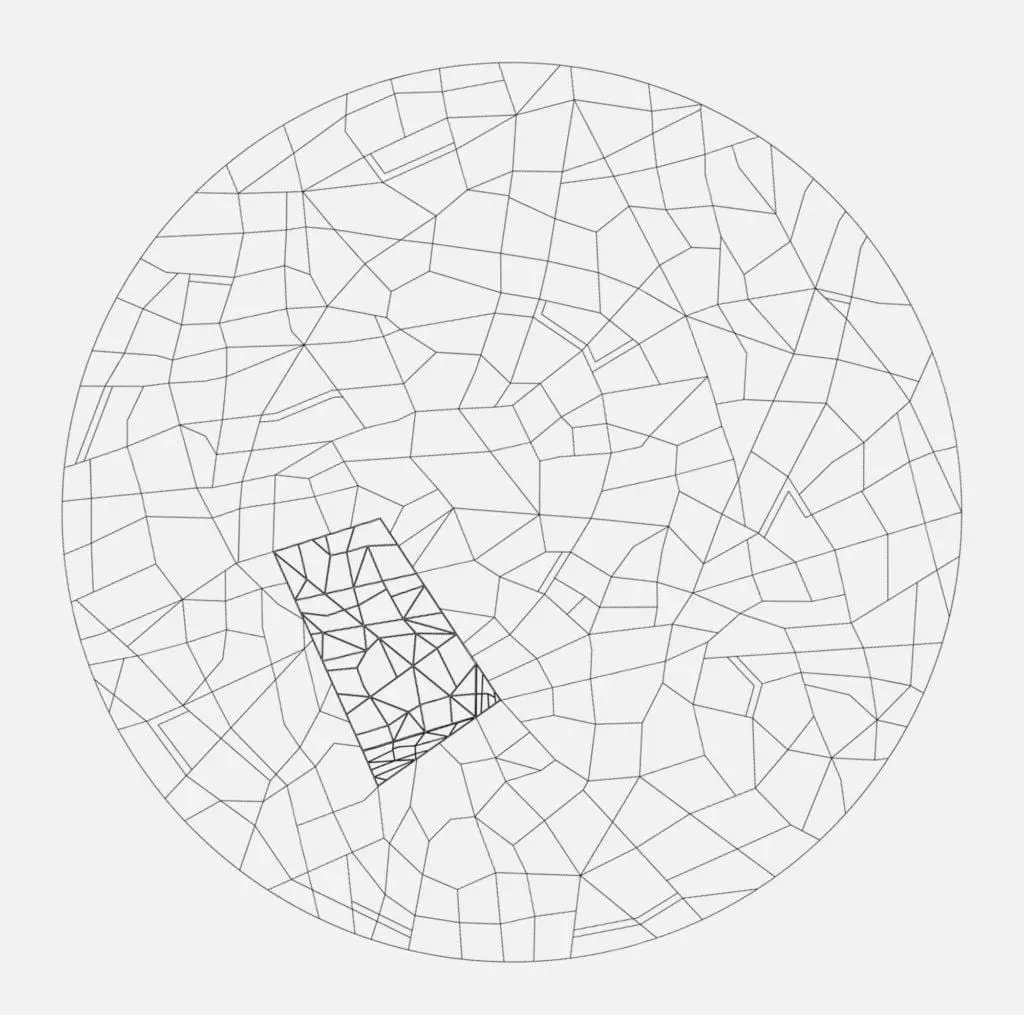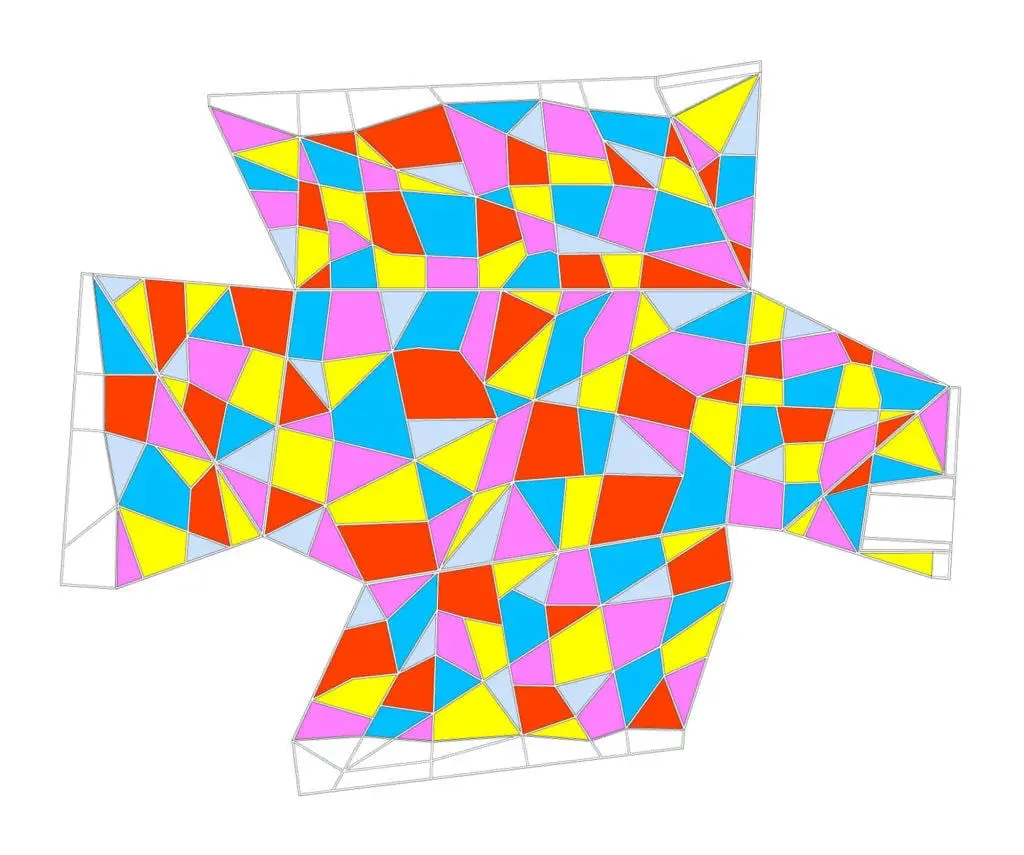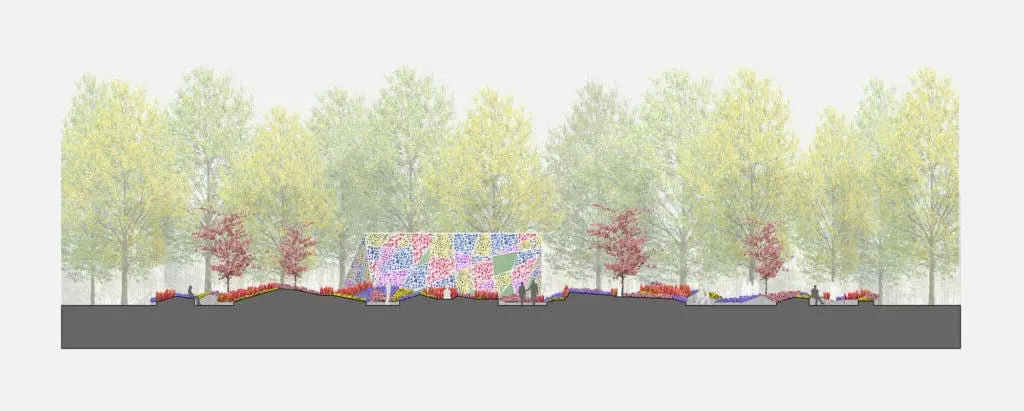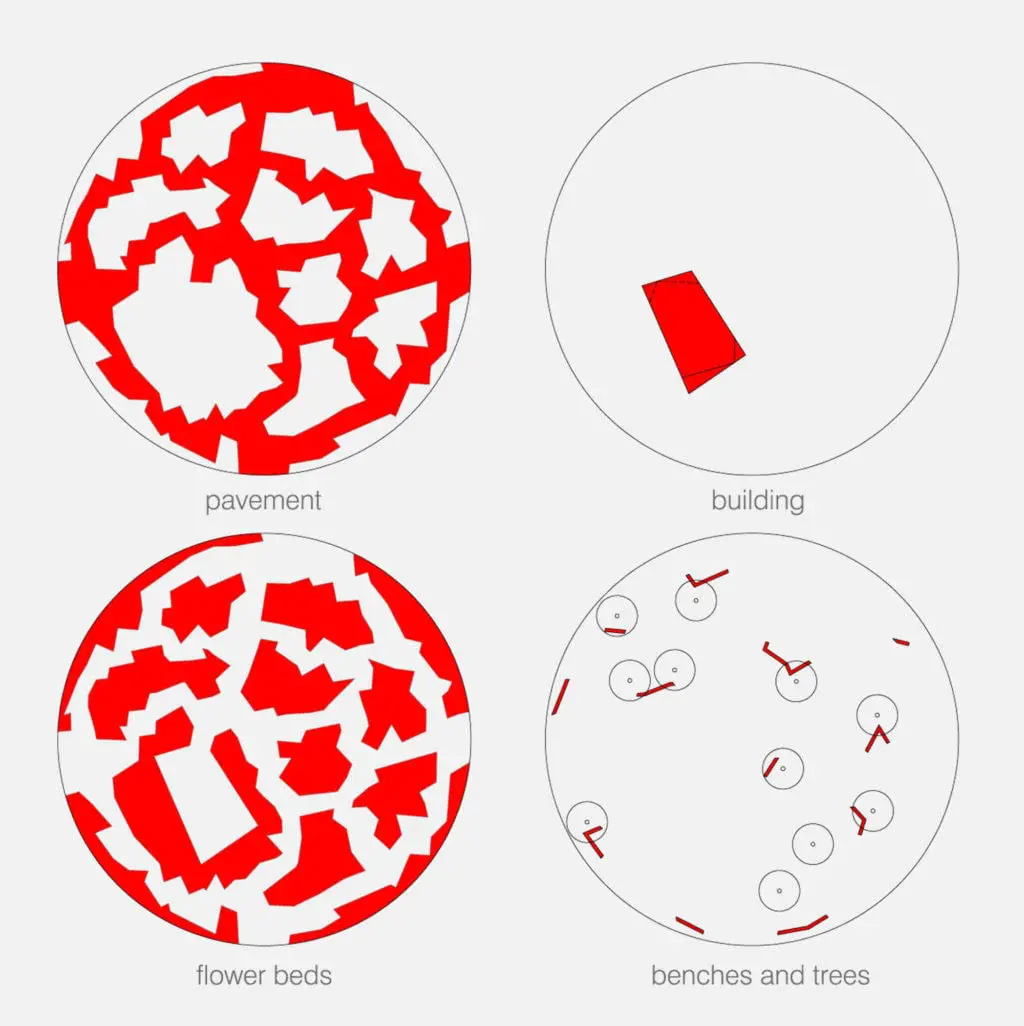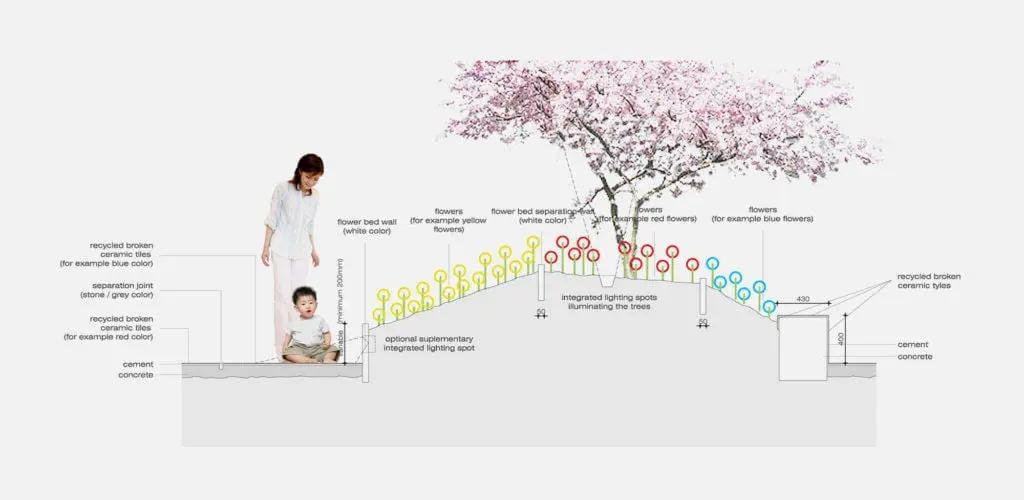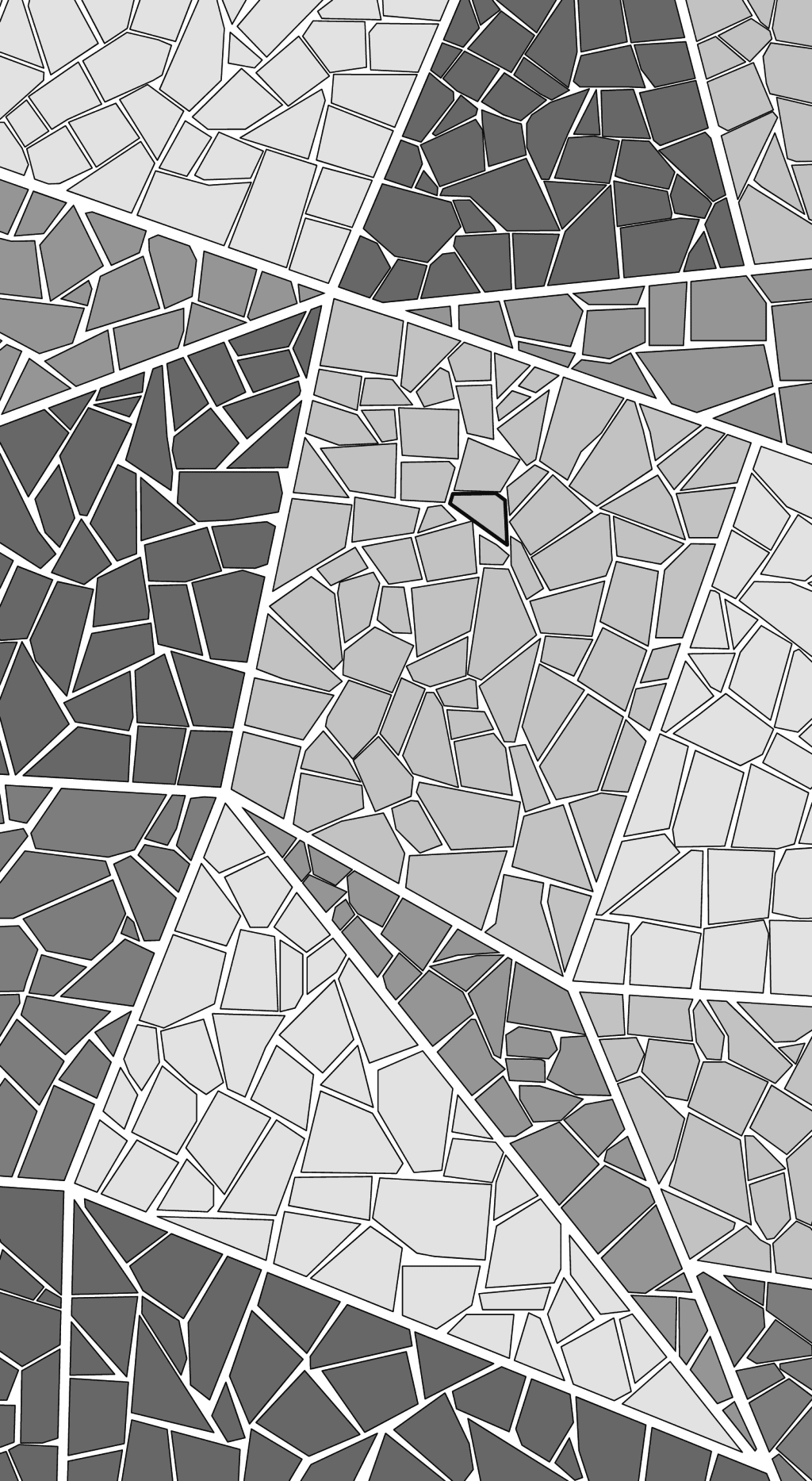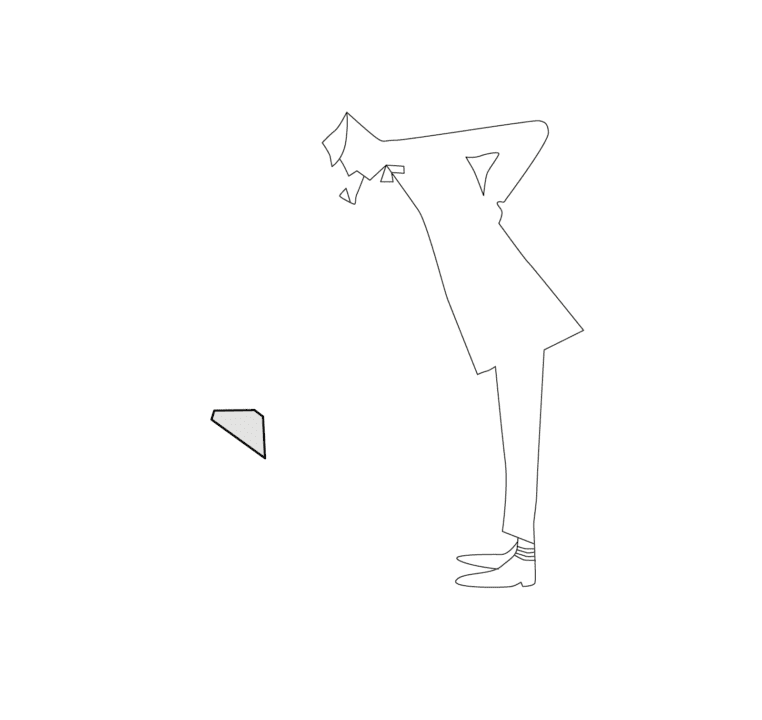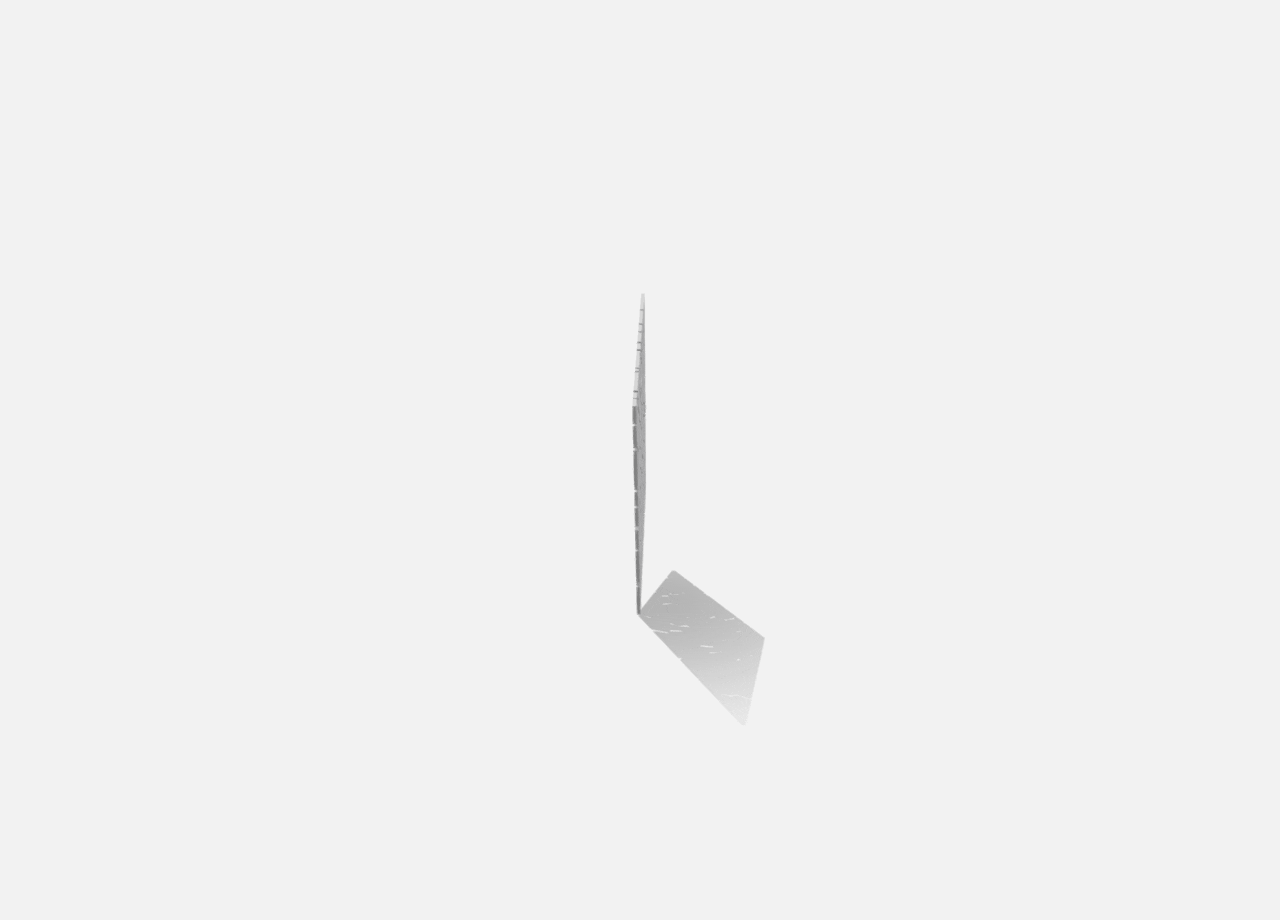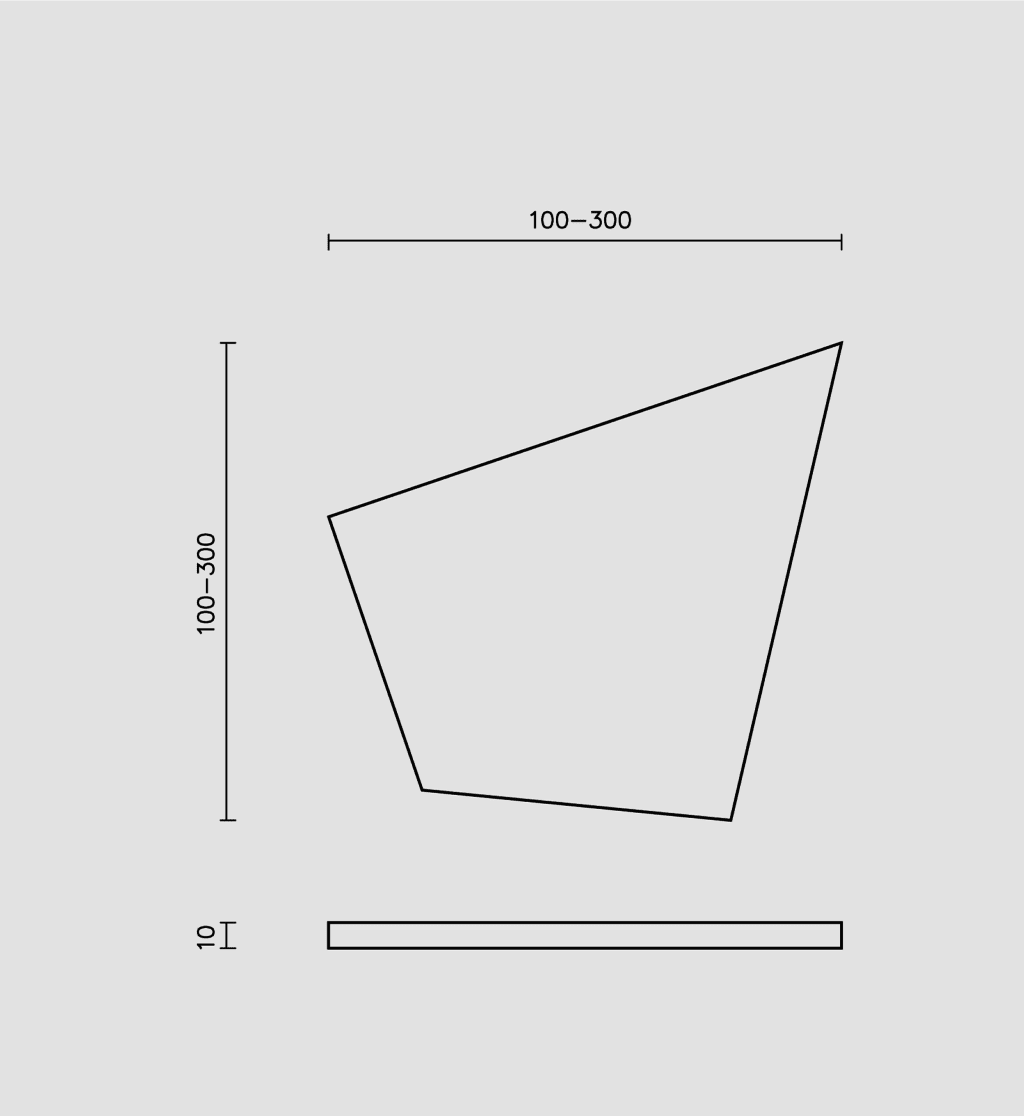The project experiments with the concept of cultural hybridization, which is a phenomenon developed during many centuries of commercial and cultural exchange between West and East. On the one hand, the use of broken local ceramic pieces of different colours for the materialization of the pavement and benches of the park and for the facades of the museum evokes the mosaic tradition that was widespread throughout Europe by the Roman Empire and that has evolved along history till the present day bringing technical solutions such as the trencadís technique used by the Catalan modernist architects. On the other hand, the geometry of the park is inspired by the crackled glaze of the Chinese porcelain developed from the 10th century during the Song. The Mosaic park and the Ceramic Museum remind citizens that the Jinzhou region was once a production area of ceramic and porcelain, although this tradition was lost for centuries, being nowadays forgotten.
The project represents the paradigm of the contemporary urban park, which is neither a fragment of the natural landscape nor a landscaped piece of the city, but the mix of both of them. Mosaic Park presents a hybrid character that combines architecture with landscape, and nature with artifice. The irregular geometry of the park is spatially unfolded into a crackled three-dimensional topography, where landscape and architecture merge into a continuous surface formed by 884 irregular planes. Moreover, this geometry is embodied as a polychromatic mosaic formed by combining flowers of four different species and colours with mosaics created with broken pieces of local Chinese pottery. Flowers and ceramic blend into a colourful mosaic that brings nature and local crafts together.
The building geometry of Ceramic Museum is conceived as an extension of the crackled geometry of the park, and it is materialized using the same ceramic tiles used for the pavement of the park, which are combined in the building facade with glazed openings also following irregular patterns. The polychromatic mosaic formed by vegetal and ceramic surfaces provide geometric and visual unity to the project avoiding the usual separation between hardscape and softscape. Landscape and architecture, Mosaic Park and Ceramic Museum, merge into a single work, at the same time multifaceted and surprising, characterized by its hybrid character and strong plastic content.
The Ceramic Museum is designed as an open structure, where the program evolves over time offering a new social platform to showcase the work of local artists, designers and artisans who work and experiment with the tradition of ceramic and porcelain. It intends to arouse the interest of citizens about their traditions, but more importantly it seeks to promote local creative industry and contemporary design by building an emblematic and modern space for the exhibition, dissemination, and sale of local handicrafts. Ultimately, the Ceramic Museum aims not only to energize the public use of the park, but also the local economy and the cultural life of the city, in order to achieve a wider social impact, beyond its primary leisure purpose.
